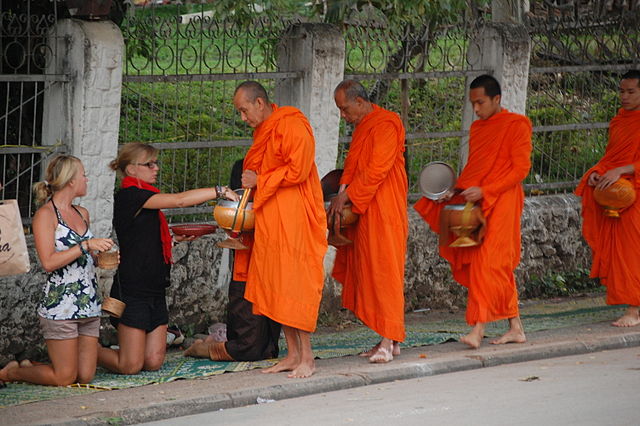Mahayana vs Theravada Buddhism
The differences between Mahayana and Theravada Buddhism are significant, as they are the two largest branches of Buddhism. While both follow Buddhist philosophy, they do so in distinct ways, just as there are various branches of Christianity such as Protestantism and Catholicism. This article will discuss these differences to help satisfy your curiosity.
What is Theravada Buddhism?
Theravada Buddhism only recognizes Gautama (Sakyamuni) Buddha and Maitreya bodhisattva. The Pali Canon in Theravada Buddhism is divided into three Tirpitakas: Vinaya, Sutra, and Abhidhamma. The main focus of this sect is on self-liberation. It has spread primarily in the southern direction, including places like Thailand, Sri Lanka, Burma, Laos, and Cambodia. In the Theravada tradition, Tripitaka is strictly written in Pali, and there is no distinction in the nirvana attained by the Buddha and the Arahat Buddha. Rituals are not emphasized in this sect, and the stage between death and rebirth is ignored. Theravada practitioners strictly follow the principle of one meal a day and do not have steadfast rules about vegetarianism, as they cannot insist on the type of food to be donated during daily morning rounds and must accept what is given by people.
What is Mahayana Buddhism?
Mahayana Buddhism accepts not only Gautama Buddha but also other contemporary Buddhas like Amitabha and Medicine Buddha. In addition to Maitreya bodhisattva, Mahayana Buddhists also accept Mansjuri, Avalokiteswara, Ksitigarbha, and Samantabhadra forms of bodhisattva. The organization of Buddhist scriptures differs between the two schools, with Mahayana accepting Tripitakas of disciplines, discourses, and dhammas. The primary focus of Mahayana Buddhists is helping other sentient beings, along with aiming for self-liberation. Mahayana has spread to northern places like Japan, Korea, Mongolia, Tibet, China, and parts of Southeast Asia. One main difference between the two sects is the language in which Tripitaka is written: Pali in the Theravada tradition and Sanskrit in the Mahayana tradition. Mahayana Buddhists refer to the nirvana attained by the Buddha and the Arahat Buddha as “liberation from Samsara,” and they heavily emphasize rituals. Mahayana believes in the stage between death and rebirth, respects the one meal a day principle but leaves it to individual Sanghas to decide, and strictly follows vegetarianism.
Key Takeaways
- Theravada accepts only Gautama (Sakyamuni) Buddha and Maitreya bodhisattva, while Mahayana accepts different forms of bodhisattva and other contemporary Buddhas.
- Theravada emphasizes self-liberation and does not emphasize rituals, while Mahayana focuses on helping other sentient beings along with self-liberation and strongly believes in rituals.
- Theravada does not emphasize vegetarianism and strictly follows the one meal a day principle, while Mahayana strictly follows vegetarianism and leaves the one meal a day principle to individual Sanghas to decide.
